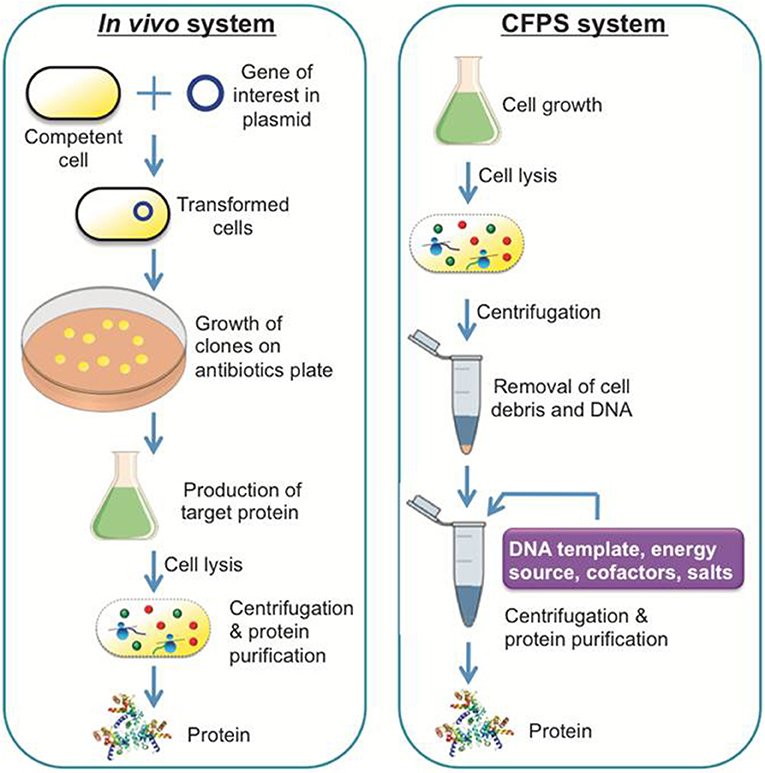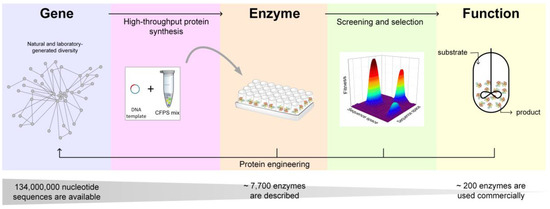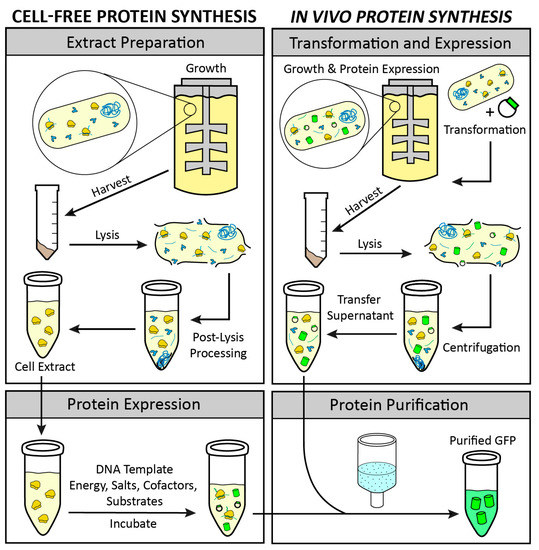Cell‑Free Protein Synthesis Systems: Redefining Synthetic Biology Prototyping
Cell‑free protein synthesis (CFPS) systems are transforming biotechnology. By extracting the protein-making machinery from cells and using it outside the cell, CFPS enables researchers to create proteins faster, more flexibly, and without the limitations of living systems.
Gentaur
Scientific Publications

Cell‑Free Protein Synthesis Systems: Redefining Synthetic Biology Prototyping
What Is CFPS?
CFPS uses the components required for translation ribosomes, enzymes, tRNAs, and energy systems outside of intact cells. When you supply a DNA or RNA template, the system starts producing the target protein in a matter of hours. It’s a method that skips transformation, culturing, and cell lysis entirely.
For foundational understanding, see the NCBI resource on CFPS.

Why CFPS Is Gaining Momentum
Fast Iteration Cycles
Instead of cloning genes into plasmids and growing cultures, you can test constructs same-day. This drastically improves design-build-test cycles in synthetic biology.
Learn more in this NIH-supported review on CFPS for rapid prototyping.
Protein Toxicity? Not a Problem
Toxic or unstable proteins that kill or stress living cells can be safely expressed in CFPS systems. There are no viability constraints.
Freeze-Dried for the Field
CFPS reactions can be freeze-dried and later rehydrated on demand, enabling field-deployable diagnostics and decentralized production.
Recent Technical Advances (2023–2025)
T7Max Promoter Improves Transcription
In 2023, researchers at the University of Minnesota published a new T7 promoter variant called T7Max, which significantly enhances transcription from linear DNA.
Stabilizing Linear DNA in CFPS
Linear DNA is easier to prepare than plasmids, but degrades rapidly in CFPS. Adding GamS protein or Chi sequences protects the DNA.
See this NIH-supported study on linear template stabilization.
Multiplex Screening in Miniaturized Systems
Using microplates and droplet systems, labs are running hundreds of CFPS reactions at once—ideal for screening enzyme variants or tuning biosensors.
Learn about CFPS screening on-chip in this NIH article.
Real-World Examples
BioBits Kits for Classrooms
The BioBits kits allow students to perform cell-free expression just by adding water. It’s real protein synthesis, visible in the classroom.
On-Demand Protein Production
Field-deployable CFPS systems are being explored for on-site vaccine production and biosensor deployment.
Use in Space Research
NASA’s GeneLab has studied CFPS in microgravity as a solution for space-based biomanufacturing.
See the GeneLab CFPS dataset for GLDS-271

Why CFPS Will Keep Growing
- Faster R&D: No need to grow cells or optimize transformation steps
- Flexible formats: From lab bench to space station
- Accessible to all: From elite labs to educational classrooms
By integrating CFPS with modern tools like T7Max, linear template design, and freeze-dried kits scientists can dramatically reduce timelines and increase throughput.
Learn more about optimized CFPS at the NIH CFPS guide.

Final Thoughts
CFPS is more than a technique it's an essential platform for rapid prototyping, diagnostics, and decentralization of biology. If your lab isn't using CFPS yet, now is the time to explore its possibilities.
Tags
- cell-free protein synthesis
- CFPS system
- in vitro protein expression
- synthetic biology
- linear DNA template
- T7Max promoter
- freeze-dried protein kits
- rapid protein production
- enzyme screening
- portable diagnostics

